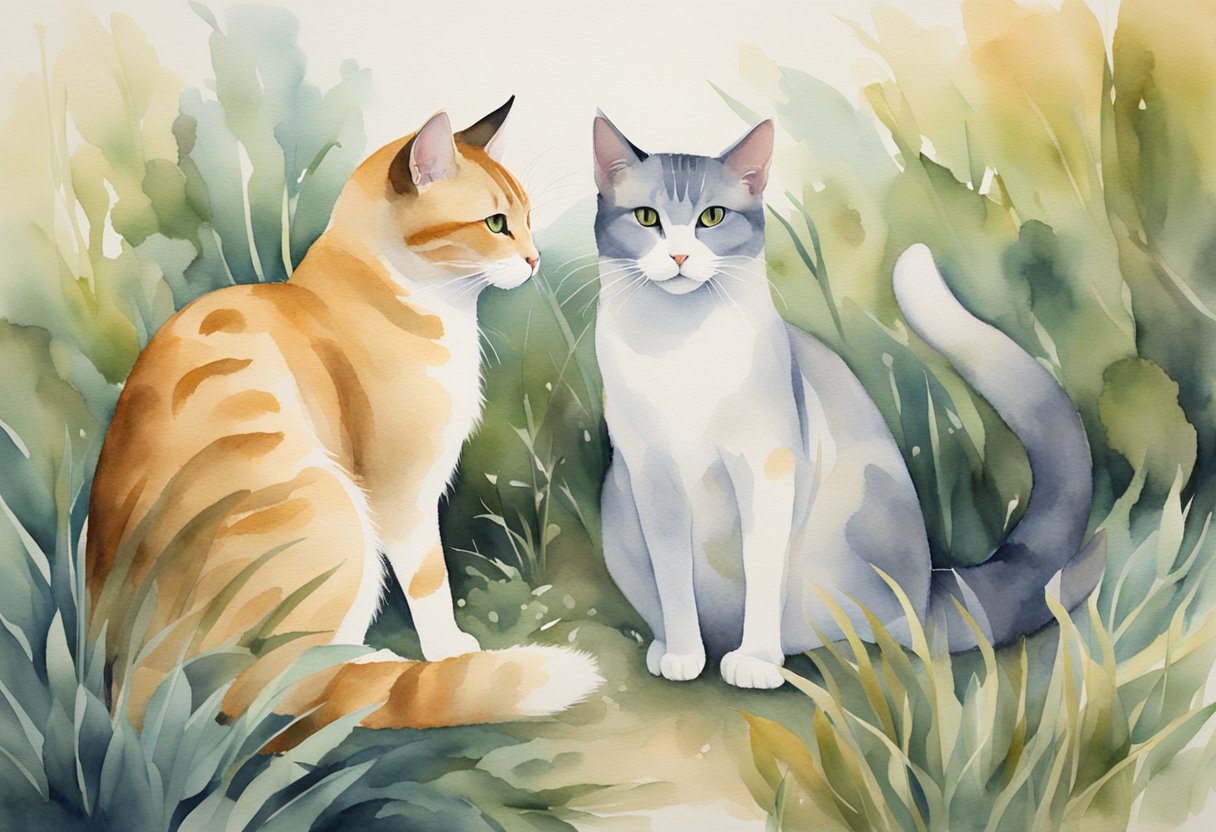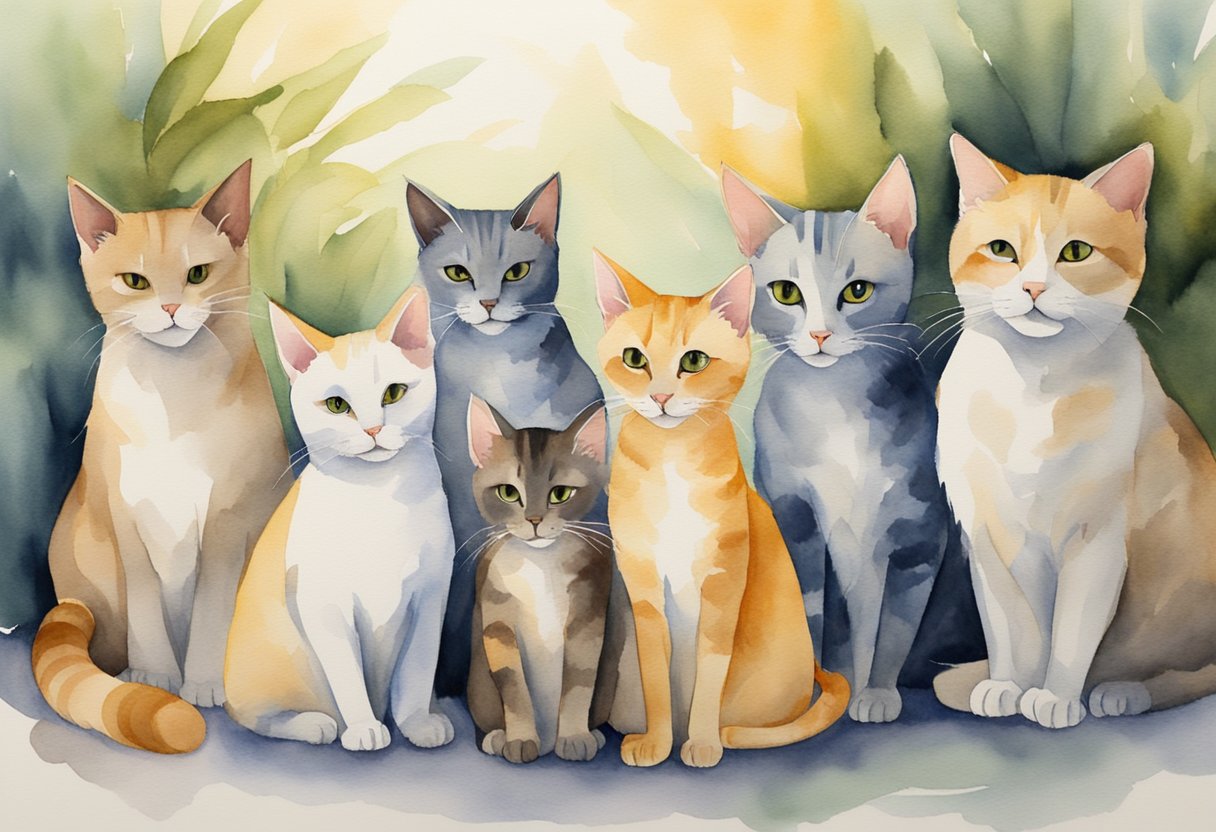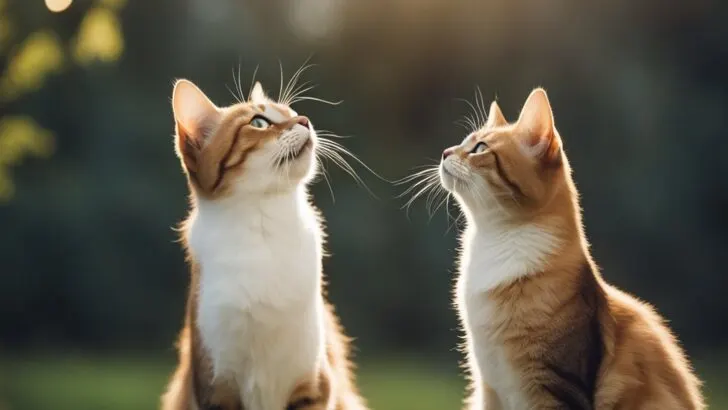Cats view other cats through a complex blend of body language and scent communication that signifies their social structure and boundaries. When you see one cat slowly blinking at another, or notice them rubbing their faces together, they’re engaging in positive communication, acknowledging each other as part of their social group.
This is often supplemented by vocalizations like meows or purrs, which can vary in meaning based on the tone and context.

Your feline friends rely heavily on scent markings to identify familiar cats and establish territories. It’s fascinating to watch a cat retrace their steps through an environment, pausing to sniff areas they’ve marked previously or investigating new scents left by other cats.
These olfactory messages can convey a wealth of information, such as a cat’s identity, availability, and even their mood.
While observing the subtleties of cat interactions can be quite engaging, it’s important to understand that some behaviors, like hissing or swatting, are indicative of discomfort or confrontation among cats. Your role as a cat owner is to provide a safe space for these interactions to occur and to know when to intervene should conflicts arise.
Social Interactions and Communication Among Cats

Cats have a sophisticated range of behaviors and signals to communicate with each other, conveying emotions, intentions, and information about their territory. Understanding these can enhance your insights into their social world.
Body Language and Vocalizations
Cats communicate a great deal through their body language, with their ears, tail, and posture playing key roles. When your cat’s ears are forward, they’re likely content or playful; if they’re flattened, they’re annoyed or scared. The tail can be a barometer of mood: a high, quivering tail signals happiness, while a puffed-up tail indicates fear.
Vocalizations such as meowing, purring, growling, and hissing serve specific functions. For instance, the familiar ‘meow’ is often used for seeking attention from humans, whereas purring can indicate contentment or even be a self-soothing mechanism during stressful situations.
Growling and hissing are clear warnings — signs that your cat wants more personal space.
Scent Marking and Territorial Behavior
A cat’s sense of smell is paramount for communication. Cats have scent glands on various parts of their body, such as their cheeks and paws. They use these to mark their territory or show affection by rubbing against objects, other cats, or even you.
Pheromones play a vital role in non-verbal communication between felines, dictating much of their social interactions. When you see your cat rubbing its face on corners, they are leaving their scent, which has a calming effect and establishes their presence within the environment.
Inter-cat Relationships and Human Bonds
The relationships cats form with each other can range from friendly to antagonistic. Kittens learn to socialize within their litter and as they grow, they may establish complex social structures.
Cats often show affection with grooming, which establishes trust and reinforces social bonds. This behavior can extend to their human companions, reflecting the cat-human bond. Your cat might lick your hand or nuzzle you to show trust and comfort.
Cats can adapt their communication to humans, learning to interpret human body language and using vocalizations they wouldn’t typically use with other cats. This unique aspect of feline perception allows them to form strong bonds with their owners, which are maintained through consistent visual recognition and mutual trust.
Introducing Cats To One Another Safely
It’s essential to understand that cats are territorial by nature, and introducing them to one another can be a delicate process. Your aim is to create a positive and secure environment that encourages peaceful coexistence.
Managing Aggression Between Cats
When you introduce cats, the risk of aggression is a concern, which is why a gradual and controlled approach is crucial. Here’s how you can manage and mitigate aggressive behavior:
- Separation: Start by keeping the new cat in a separate room with all the essentials: food, water, litter box, and a comfortable resting place. This physical barrier allows the cats to get accustomed to each other’s scent without direct interaction.
- Scent Exchange: Begin scent swapping by stroking each cat without washing your hands to mix their scents. You can also swap bedding between the cats to further familiarize them with the other’s smell.
- Controlled Visual Contact: Internet the cats through a pet gate or a slightly open door after a few days of scent swapping. This allows them to see each other without the risk of a physical encounter.
- Supervised Interaction: Once they seem comfortable with visual contact, you can introduce face-to-face meetings. Keep these encounters short and always supervised. Have a toy handy to distract them if tensions rise.
- Positive Reinforcement: Use treats and praise to reward non-aggressive behavior. Feeding them on either side of a closed door can build positive associations with the presence of the other cat.
Throughout this process, remember that patience is your best friend. Some cats may take a few days to adjust, while others may need several weeks or even longer to coexist peacefully. Pay attention to their body language and look for signs of stress or aggression, such as hissing, growling, or flattened ears. If any of these occur, revert to the previous step and proceed more slowly.

My name is James, and welcome to FAQCats!
Along with our team of cat owners, expert pet enthusiasts, and pet professionals, we aim to write engaging helpful, engaging content about cats. At FAQCats we strive to provide content that’s accurate and fun to read. Our team writes about everything related to cats; even the most complex of topics. Through extensive research and caring for our own fur-pals, we’re able to provide something cat owners worldwide will love. Have a look around, and leave us feedback anytime!

